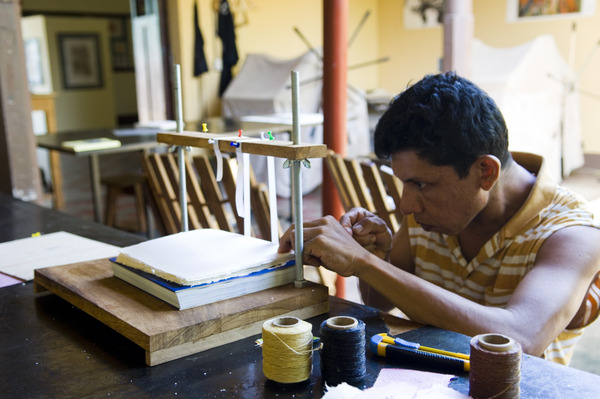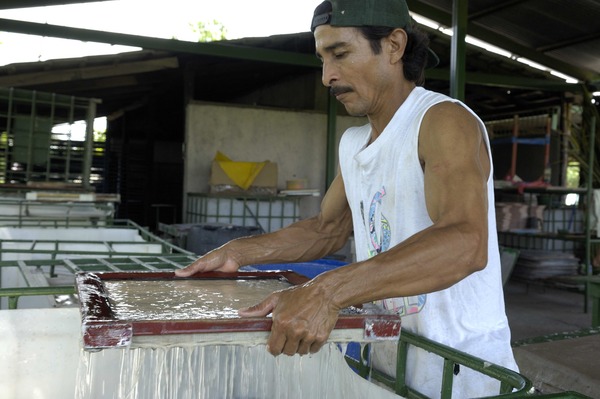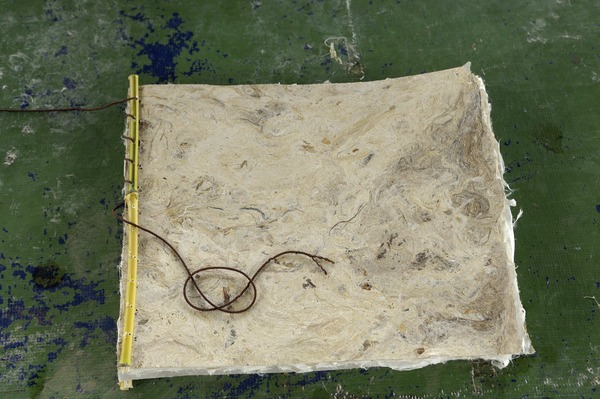Amate. In some ancient civilisations paper was of great importance in religious ceremonies and had a great spiritual significance. This was the case in China, Nepal, Japan and other such places. In Mexico the Mayas and Aztecs used paper to the same end. The indigenous Aztec paper was known as ‘amalte’ or ‘amate’ because this was the name of the tree from which it was extracted. The tree is of the genus Ficus, which includes diverse species of mulberry, widely used throughout the history of paper making. As today, large strips of bark were stripped from the trunk and placed one on top of the other on a smooth wooden table. These were then beaten with stones until they formed a sheet of uniform thickness. A surface treatment of gum and starch was added and then burnished to create a surface suitable for writing and drawing.
Today, with some changes, this paper continues to be produced in natural tones and diverse colours.
Amate paper – large format 122×245 cm. In white, mottled and natural
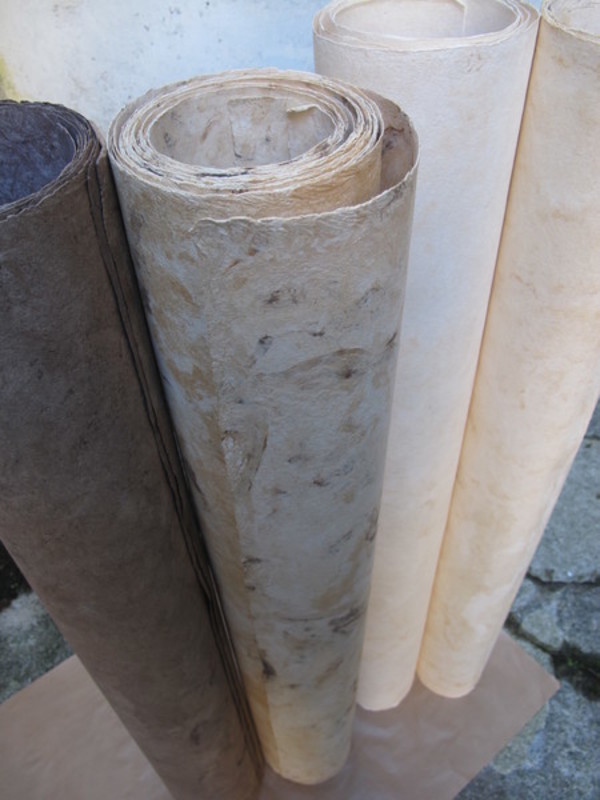
Amate paper 40×60 cm
Smooth

Amate paper 40×60 cm
Laced

Spider web
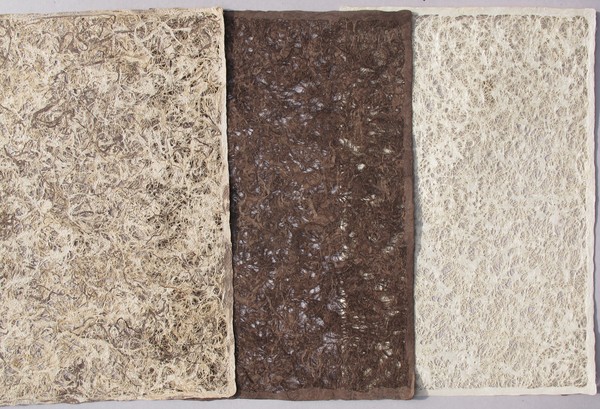
Coloured amate paper, smooth and laced 40×60 cm in size.
Consult prices

Banana stalk paper. Paper made in some countries of South America, chiefly Nicaragua. It is a tough, fibrous paper with a smooth natural adhesive.
40×55 cm –> Precio 3,50€
